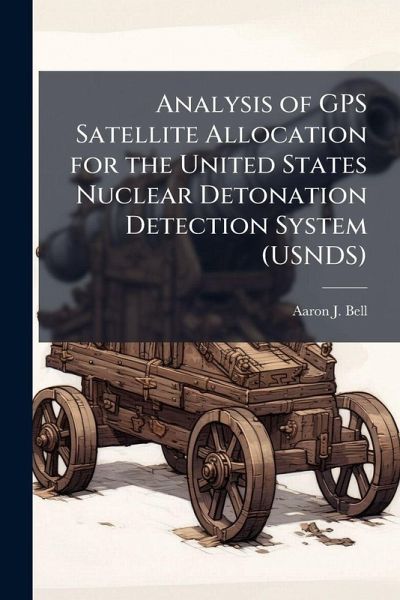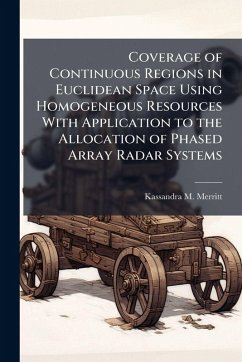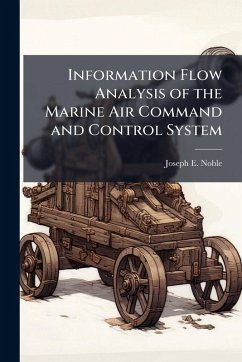
Analysis of GPS Satellite Allocation for the United States Nuclear Detonation Detection System (USNDS)
Versandkostenfrei!
Versandfertig in über 4 Wochen
15,99 €
inkl. MwSt.
Weitere Ausgaben:

PAYBACK Punkte
8 °P sammeln!
The United States Nuclear Detonation Detection System (USNDS) relies on sensors onboard NAVSTAR Global Positioning System (GPS) satellites to detect atmospheric nuclear detonations. Though there are currently over 24 operational GPS satellites, USNDS ground based antennas are only capable of actively monitoring 24 satellites at a time. Personnel at the Air Force Technical Applications Center (AFTAC) desire a well-defined methodology for selecting which 24 satellites should be monitored to maximize global coverage capability. This research introduces a means to numerically quantify each satelli...
The United States Nuclear Detonation Detection System (USNDS) relies on sensors onboard NAVSTAR Global Positioning System (GPS) satellites to detect atmospheric nuclear detonations. Though there are currently over 24 operational GPS satellites, USNDS ground based antennas are only capable of actively monitoring 24 satellites at a time. Personnel at the Air Force Technical Applications Center (AFTAC) desire a well-defined methodology for selecting which 24 satellites should be monitored to maximize global coverage capability. This research introduces a means to numerically quantify each satellite's individual contribution to the coverage provided by the constellation as a whole. A heuristic generates a set of possible combinations of satellites that yield high global coverage. This work has been selected by scholars as being culturally important, and is part of the knowledge base of civilization as we know it. This work was reproduced from the original artifact, and remains as true to the original work as possible. Therefore, you will see the original copyright references, library stamps (as most of these works have been housed in our most important libraries around the world), and other notations in the work. This work is in the public domain in the United States of America, and possibly other nations. Within the United States, you may freely copy and distribute this work, as no entity (individual or corporate) has a copyright on the body of the work. As a reproduction of a historical artifact, this work may contain missing or blurred pages, poor pictures, errant marks, etc. Scholars believe, and we concur, that this work is important enough to be preserved, reproduced, and made generally available to the public. We appreciate your support of the preservation process, and thank you for being an important part of keeping this knowledge alive and relevant.












